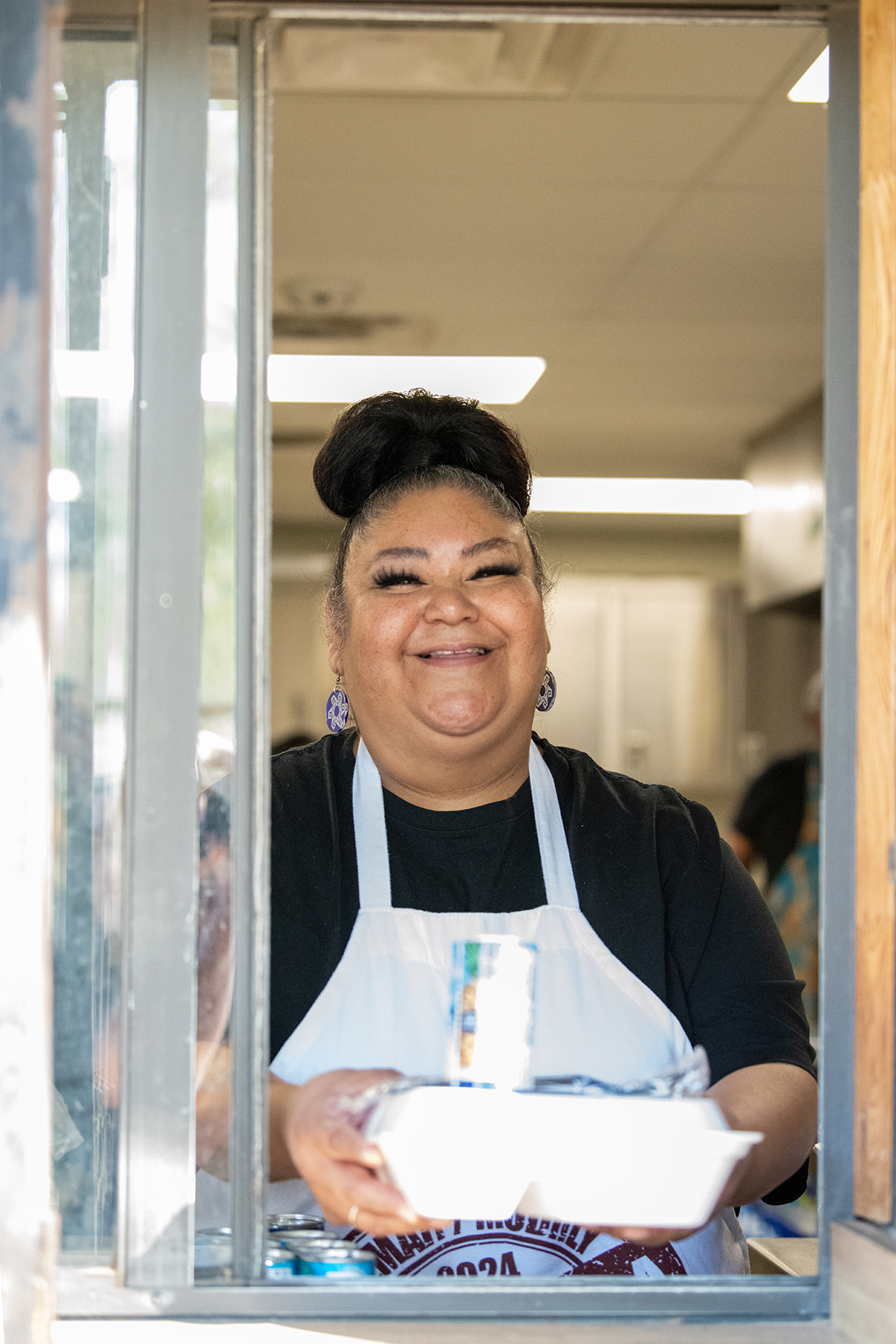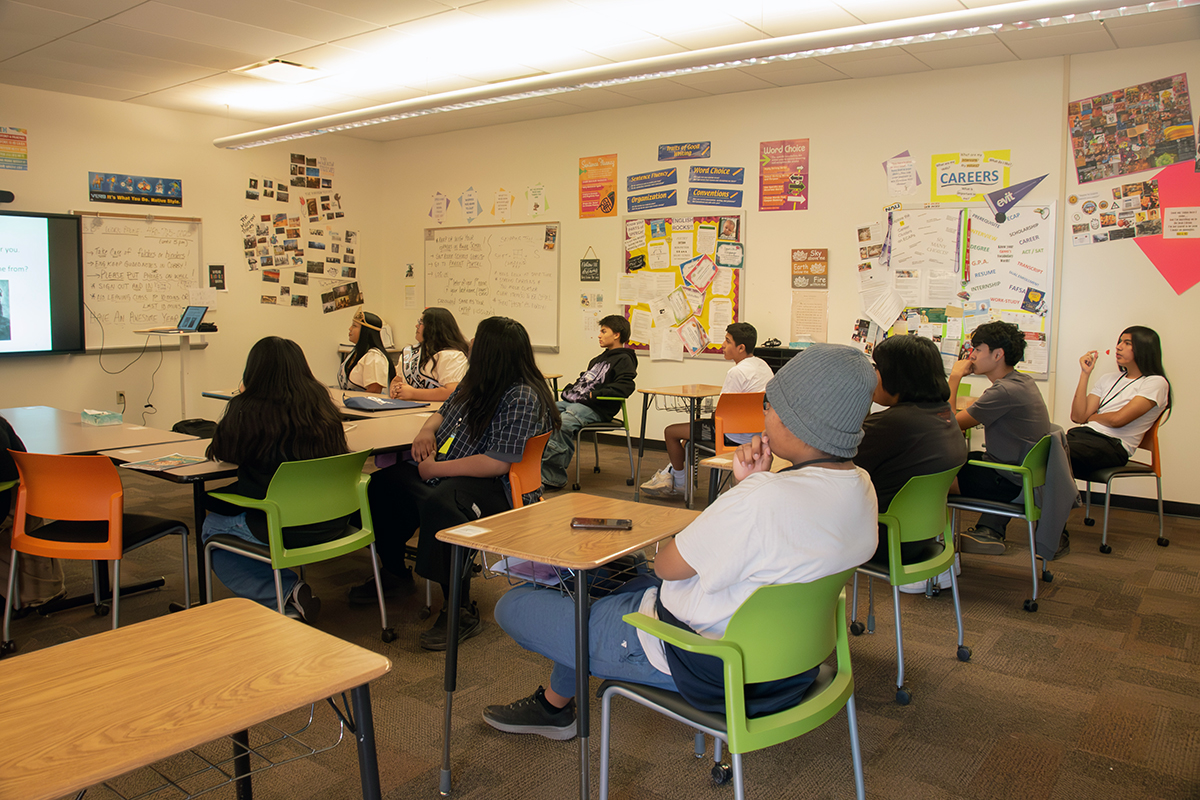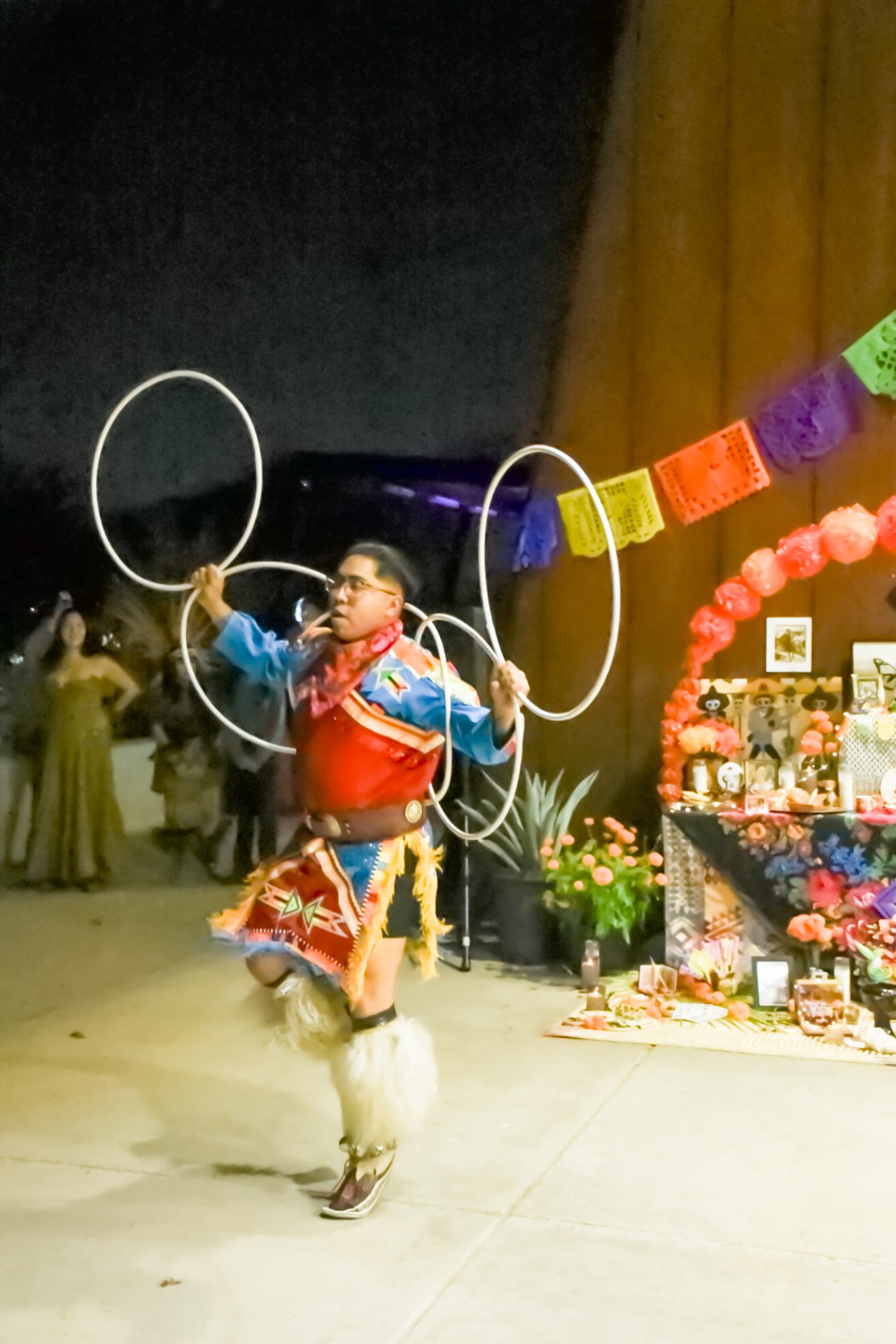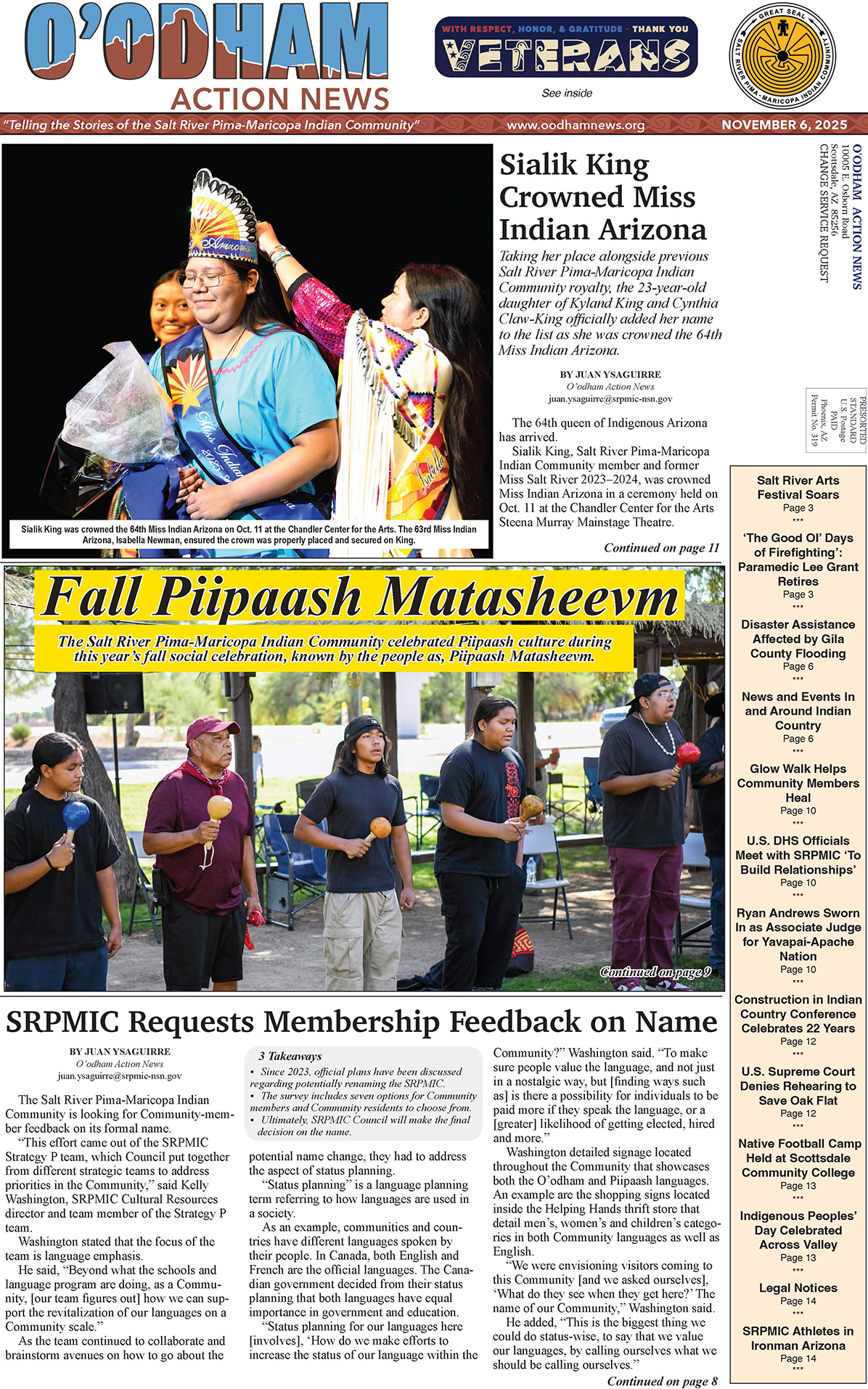VIEWS: 3119
September 13, 2023Native Seeds/SEARCH Successfully Tests Spiral Basin Inspired By Salt River Community Garden
The nonprofit seed conservation organization Native Seeds/SEARCH (NS/S) recently celebrated the first major successful test of their spiral-shaped basin, after a monsoon filled up the rainwater harvesting feature at their Conservation Center in Tucson.
Salt River Pima-Maricopa Indian Community Council member and NS/S Chair Jacob Butler inspired the basin. NS/S garden staff toured the Salt River Community Garden in 2021, which has spiral rainwater catchments that allow native desert plants to grow to maturity much faster and provide shade, shelter and habitat for the gardens.
“That [spiral] design really stuck with our team and seemed like a great fit for this space,” said Joel Johnson, NS/S conservation garden farmer. “Especially since the mouth of the spiral could open to receive the parking lot runoff and still allow a truck road to circle the area, giving it a dual function as a turnaround at the end of the parking lot.”
Butler is also a permaculture instructor through the Traditional Native American Farmers Association (TNAFA). Many of the permaculture techniques he learned through the TNAFA have been applied or modified to the spiral garden at Salt River, as well as at the NS/S Conservation Center.
“[The TNAFA] took that information from Bill Mollison, who many might know as ‘The Father of Permaculture,’ and his concepts, but Mollison took that from Indigenous peoples from around the world,” said Butler. “For us to be utilizing it now is coming full circle to what it once was.”
The Conservation Center garden farm property is located on a double floodplain, receiving runoff from Finger Rock Wash as well as drainage from the Rillito River watershed and surrounding roads and properties.
In July 2021, the soil became fully saturated, which created a 2-acre pond right where NS/S is planning to expand their seed production fields.
“The spiral basin is one link in a series of rainwater harvesting earthworks that will slow and spread that water, allowing it to infiltrate into our soils without causing flood damage or standing water that could harm young crops,” said Johnson.
When Butler visited the Conservation Center to take a look at the land, he brought some of his ideas with him.
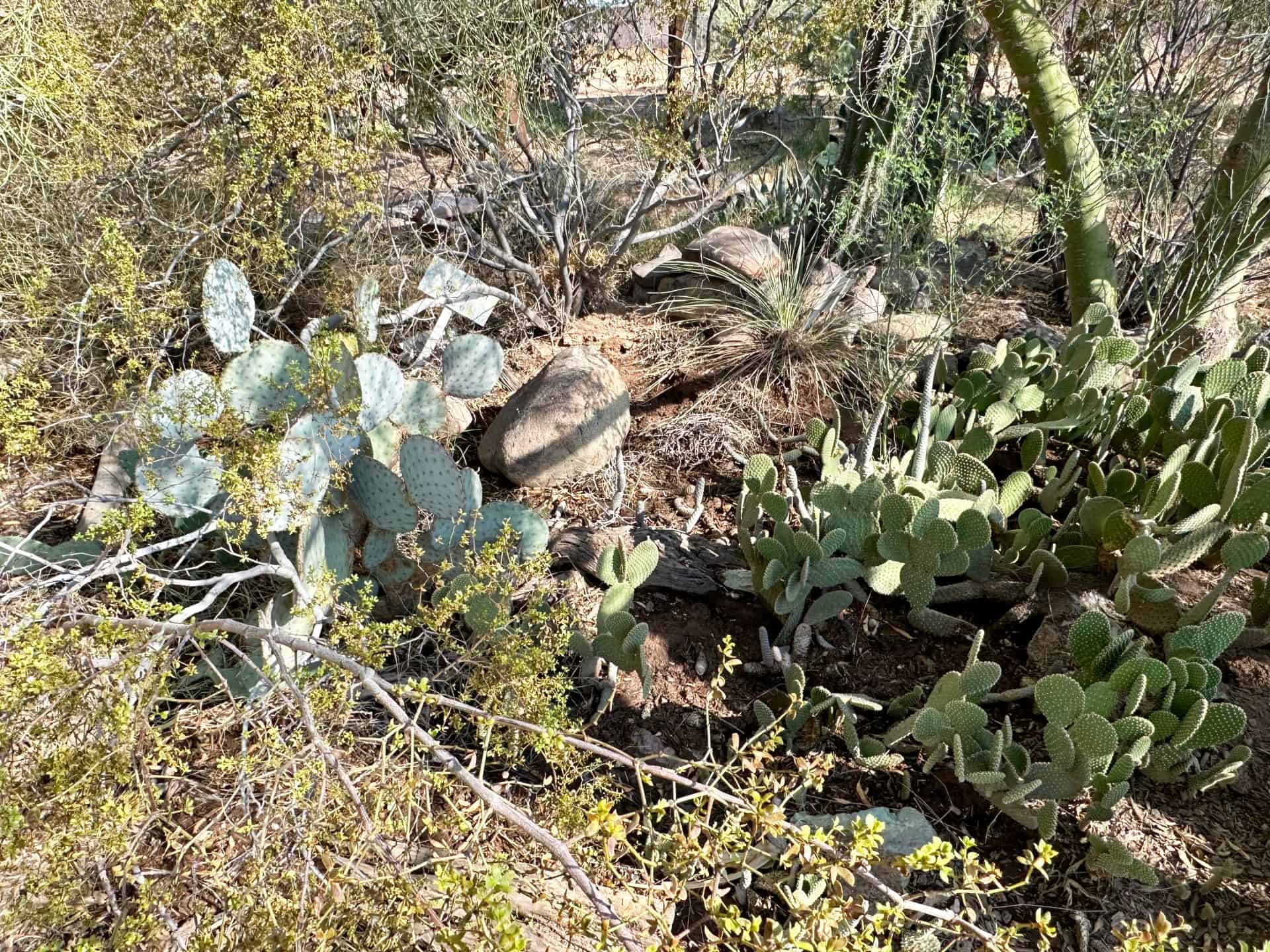
He said, “We talked about how you can trap water and help support trees that aren’t edible, which can filter out the toxins of the soil before the water can get to the plants.”
The basin at NS/S collects the rain, which infiltrates the soil. Currently nothing is being planted within the basin, because the organization wanted to observe how it reacted to its first monsoon. However, trees have been planted around the basin to take advantage of the captured water, Johnson said.
“[We planted] desert ironwood, desert willow and mesquite on the south side to provide shade,” said Johnson, “and heritage Quitobaquito pomegranates on the south side of the basin.”
Johnson said that once NS/S makes adjustments to the basin this fall, its inner edge will be planted with perennial pollinator plants native to the Sonoran Desert.
Update on O’odham Seeds At NS/S
In 2021, there was a large flood at the Conservation Center due to a monsoon. That year, NS/S grew an O’odham June corn that a grower had been selecting for blue kernels, according to Johnson.
“It was a very successful grow-out, with beautiful mixed white and blue kernels and some ears that were all blue,” said Johnson.
During winter 2022-2023, the I’itoi sivol onions were very productive. Johnson said that the gophers love to eat the onions.
O’odham Soam miliñ (also written as S-uam/S-oam Mi:loñ/Miloñ), the yellow-meated watermelon, currently is in full bloom.
“It is a different accession than we did last year. This one came originally from Queen’s Well on the Tohono O’odham Nation,” said Johnson. “We planted in early July. The plants are looking good and flowering well. We are looking forward to seeing fruit developing, and to the delicious task of saving seed from those soon!”
Howur, a beige Pima lima bean collected between Santan and Blackwater in the late 1970s, was planted in late March and again in late May. Johnson said the plants still look good, with many beans harvested this year.
“We expect when the weather moderates a bit, we’ll get more blooms and more beans,” he said.


